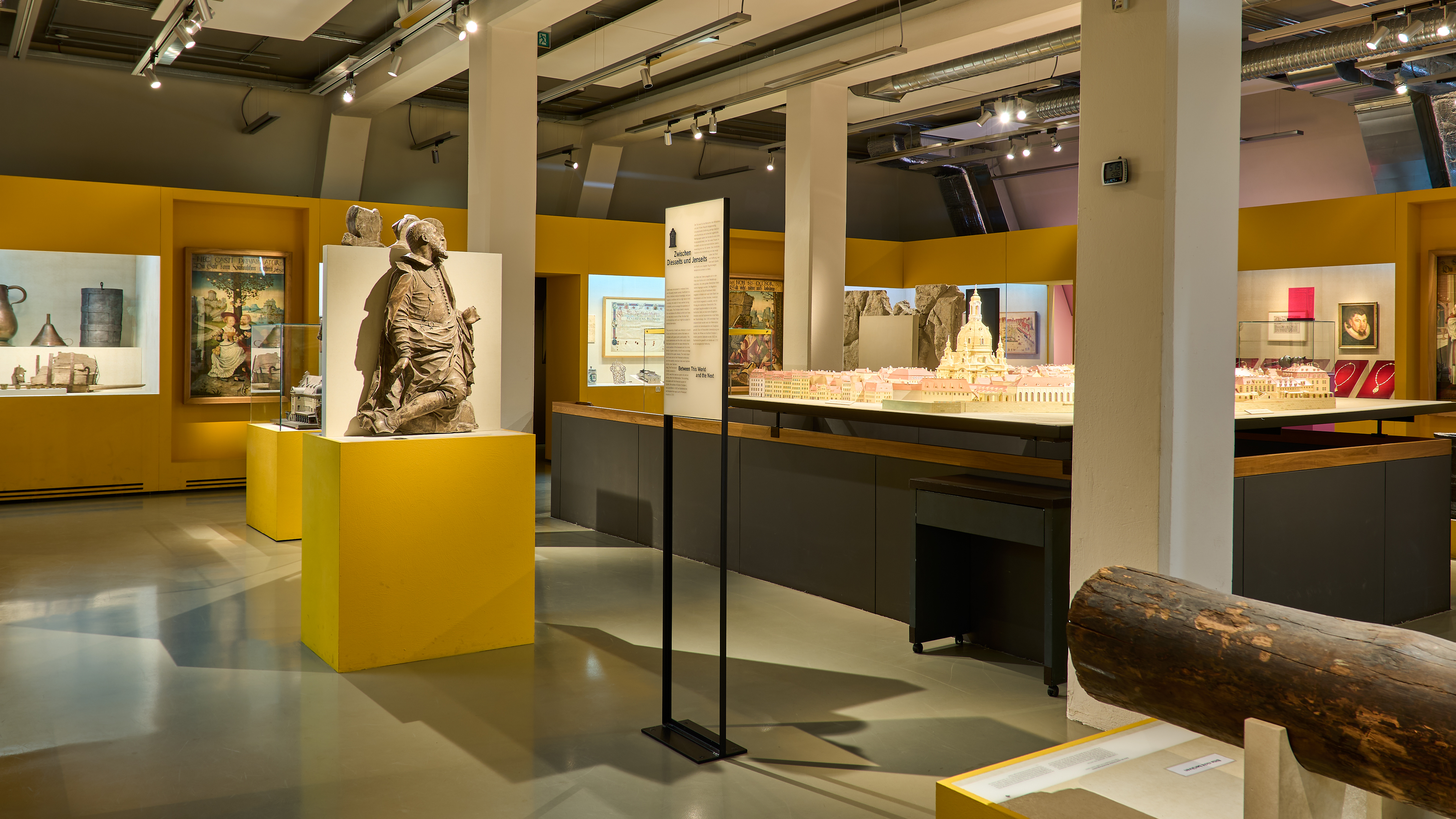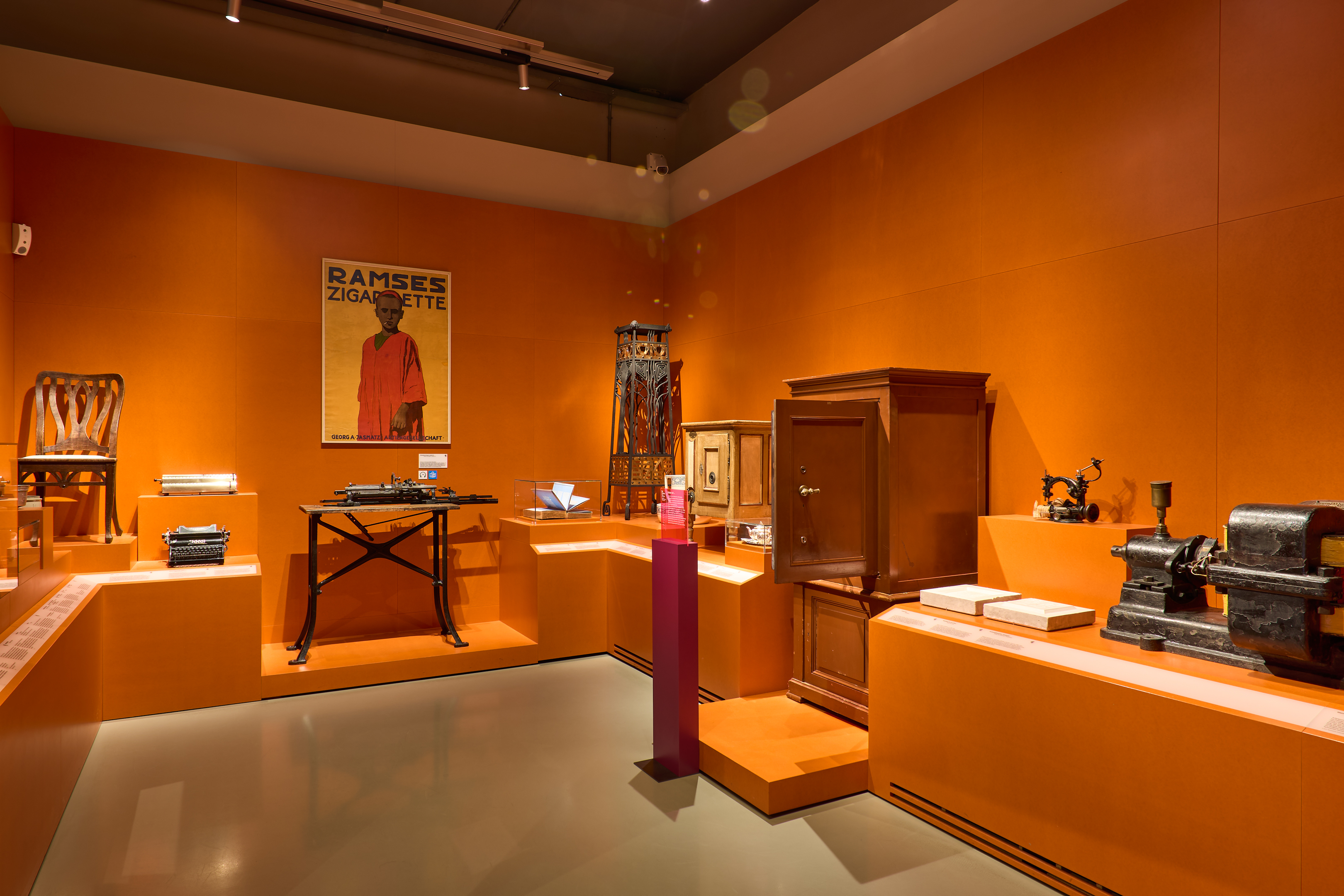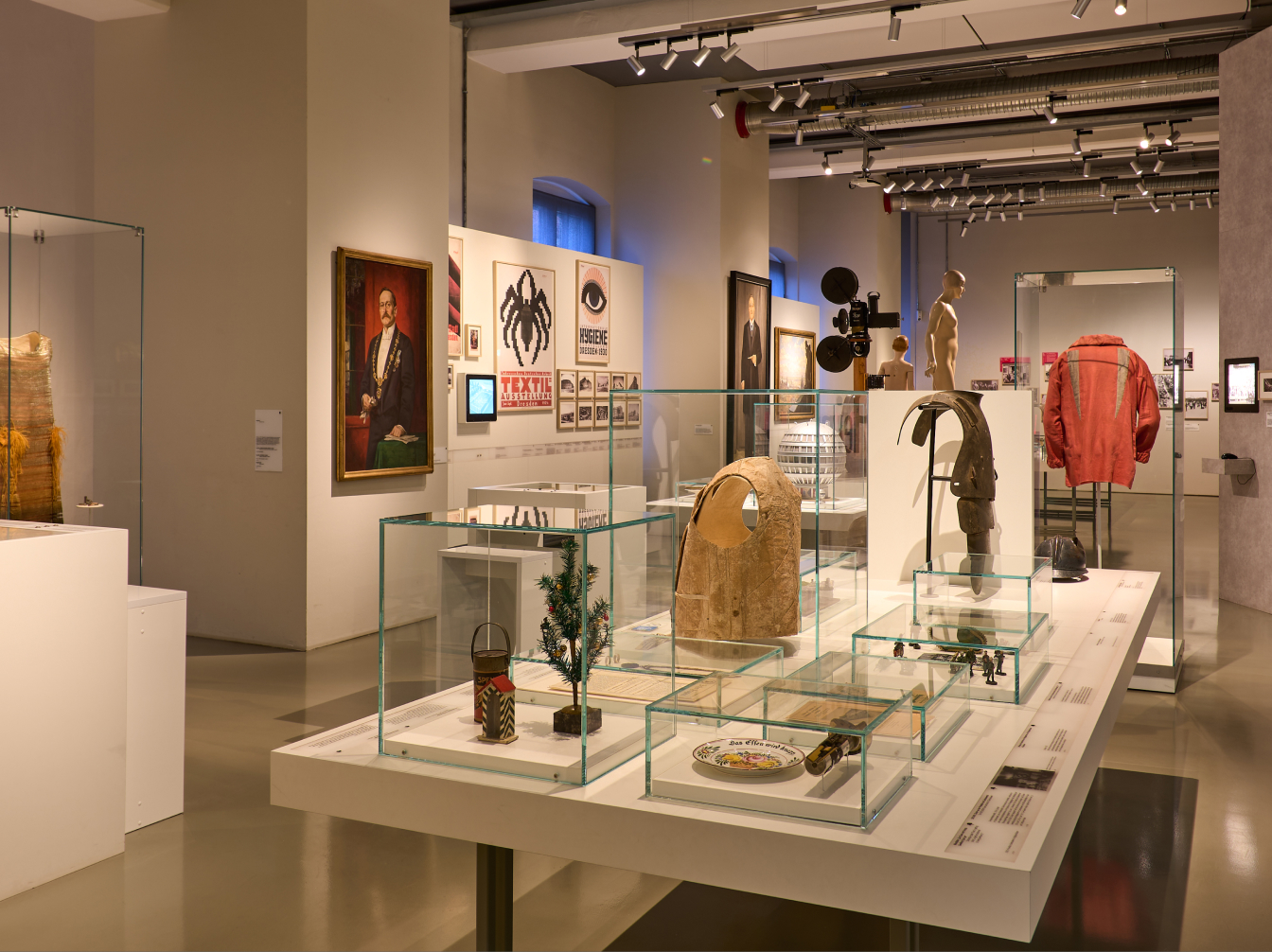
The rise of the city
The first section of the permanent exhibition is dedicated to the history of the city between the early settlement in the Elbe Valley and the heyday of the Augustan period. As an introduction, an elaborately designed relief model animation film installation and a walk-in aerial photograph give an impression of the eight hundred years of development and the current extent of the city. The world of the Middle Ages can be reconstructed through archaeological finds, relics and other evidence of religious life, architectural fragments and insignia of the city administration. The following chapters are devoted to the rise of the Albertine residence to a city of European importance during the Renaissance and to a center of power of the Saxon-Polish Union in the Baroque era. Models of the city and buildings illustrate the topography of the city. Guild objects and outstanding products demonstrate the high standard of the town's craftsmanship. The »Ten Commandments« votive tablets from the Church of the Holy Cross, the flasher pulpit from St. Bartholomew's Church and the burial objects from St. Sophia's Church (»Sophienschatz«) are undoubtedly highlights.

The city of citizens
The transition to modernity – the history of the city between the Napoleonic era and the outbreak of the First World War – is the theme of this exhibition space. The formation of bourgeois society, the development and self-image of the "beautiful" city of Dresden are placed in the context of the unification of the nation-state and the transition to industrial society. A great deal of space is devoted to the depiction of the struggle for civil liberties. The emancipation of the Jews can be experienced in a media station; several objects and paintings bear witness to the Dresden May Uprising of 1849. Magnificent chains of office, larger-than-life monumental figures and large-format history paintings show the upper middle-class elite's striving for representation, the interpretation of their own history and their anchoring in the public sphere. The bourgeois world of associations and life becomes visible through flags, drinking jugs, fencing masks, toys, travel utensils and more. One section of the exhibition is dedicated to the lower and middle classes, in particular the everyday life and emancipation of the working classes. Finally, Dresden's inventive spirit can be seen in a selection of products from Dresden's »fine« industries: not missing here are Lingner's Odol bottle, Eschebach's icebox, the Siemens patent fastener or Ernemann's camera.

Democracies and dictatorships
The third room of the permanent exhibition tells the story of the city from the outbreak of the First World War in 1914 to the Peaceful Revolution of 1989 / 90. For the city of Dresden and its citizens, the changing forms of government and social systems were associated with war and peace, destruction and reconstruction, oppression and freedom, crime and humanity, disappointment and hope. The Janus-faced nature of modernism in the eventful 20th century is reflected in the choice of objects and design. A wedge runs through the middle of the exhibition space, representing the destruction of the city on February 13/14, 1945, which is narrated with its pre- and post-history. Unique exhibits and several media stations are dedicated to turning points in the city's history, the relationship between rule and everyday life and present exemplary biographies. Films that accompany the narrative are particularly noteworthy: City advertising for the exhibition and cultural city from the 1920s, original footage of the transport of Dresden's Jews to the »Hellerberg Jewish camp« in 1942, propaganda strips of the »socialist metropolis« from the GDR era and recordings of the October Days of 1989.

Discover the exhibition with the app or audio guide
The media guide to the Stadtmuseum's collection presentations offers audio tours in German, English and Ukrainian as well as in easy language and German sign language. The various tours provide information about selected historical events and key exhibits in the exhibitions.
The Mediaguide can be borrowed from the museum ticket office or used on your own device. Download the »Museen Dresden« app free of charge from the App Store or Google Play Store on your own smartphone.
























